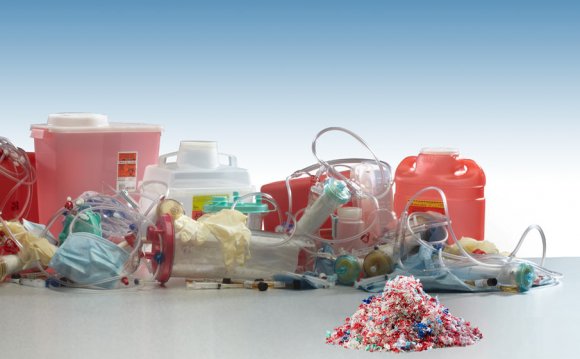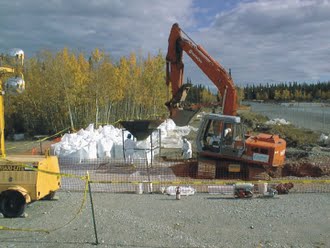
There are many options for the treatment and disposal of medical waste. Some work best in large facilities appropriate to major hospitals or centralized facilities, and others are best for low to middle income countries, small facilities and resource constrained settings. The first step in any waste management is to minimise waste and to ensure that it is properly segregated at source. If general waste is mixed with any infectious or hazardous waste cannot be segregated and all of it then must be treated as though it is infectious or hazardous
Infectious waste this is the waste stream that attracts the most attention and for which there are the most treatment options.
The potential for syringe needles and other sharps waste to spread HIV and hepatitis raise real concern. In some countries, rag pickers search them out and they are illegally repackaged for sale.
Hospitals should aim to negotiate take-back agreements with their suppliers for unused and/or expired pharmaceuticals. Failing this there are a number of ways to neutralize or contain pharmaceutical wastes
Radioactive waste: Not all facilities produce radioactive waste, but it can result from treatment (eg radioactive tracers) or be present in diagnostic and analytical equipment.
Human tissues, blood, placenta- this waste can be hard to handle and sensitive, particularly for anything recognizably human. However, a number of different options are available for different situations.
Biodegradable wastes: As much as 25 percent of the waste from a healthcare facility can be kitchen and food scraps. These can be composted or biodigested to produce compost and biogas, a renewable fuel.
Recyclable waste: Paper, plastic, metal and glass are the most widely recycled materials. Segregating, reusing, and recycling these wastes can make a significant difference to the economics of the facility waste disposal operation.
Key resources
The World Health Organisation (WHO) has a large website including tools and information for use at the country and facility level, from policy documents to costing to legislation.
HWCH and WHO have been partners with UNDP GEF in their Global Healthcare Waste Project. The project website has information and practical guidance on alternative waste treatment technologies and mercury substitution.
WHO Blue Book Chapter 5: Health-care waste-management planning. The “Blue Book” is the World Health Organization’s guidelines on the safe management of healthcare waste. Although it has global application, it is particularly important in low to middle income countries where the infrastructure and national guidelines might not be fully developed. The current edition, published in 2013, was written by a large group of internationally recognised experts, including HCWH staff. Chapter 5 deals particularly with planning, both at the national and facility level.
Prüss-Ustun, A. et al. (2013) Safe management of wastes from health-care activities, second edition. Publ: WHO, Geneva, 328pp. 978 92 4 154856 4
Source: noharm-global.org
RELATED VIDEO
Chemical Treatment and Disposal Options
Sludge Treatment Continued & Waste Water Disposal Video ...
Anaerobic Waste water disposal -kettathum kandathum Oct 1 ...





 Radioactive wastes are wastes that contain radioactive material. Radioactive wastes are usually by-products of nuclear power generation and other applications of nuclear fission or nuclear technology, such as research and medicine. Radioactive waste is hazardous to...
Radioactive wastes are wastes that contain radioactive material. Radioactive wastes are usually by-products of nuclear power generation and other applications of nuclear fission or nuclear technology, such as research and medicine. Radioactive waste is hazardous to...
 A landfill site (also known as tip, dump or rubbish dump and historically as a midden) is a site for the disposal of waste materials by burial and is the oldest form of waste treatment. Historically, landfills have been the most common methods of organized waste...
A landfill site (also known as tip, dump or rubbish dump and historically as a midden) is a site for the disposal of waste materials by burial and is the oldest form of waste treatment. Historically, landfills have been the most common methods of organized waste...








